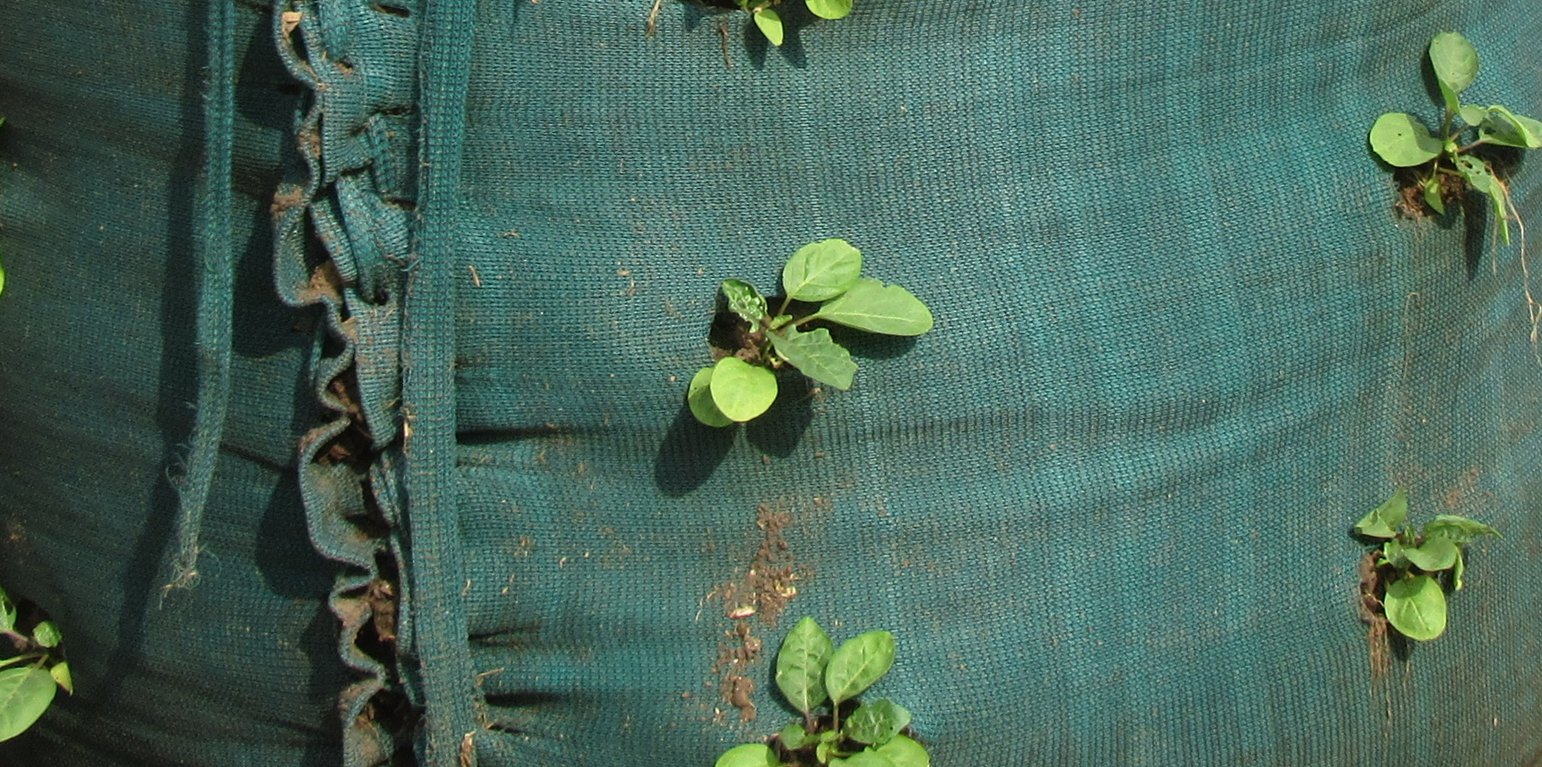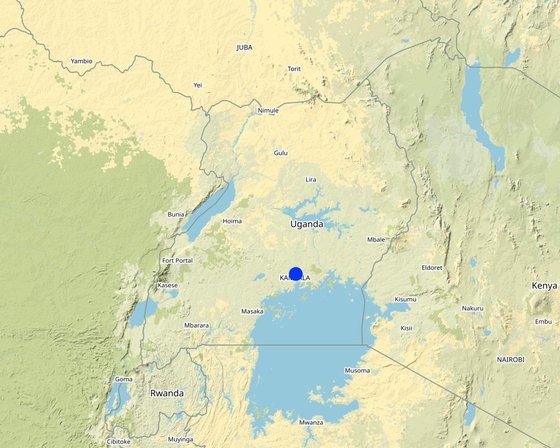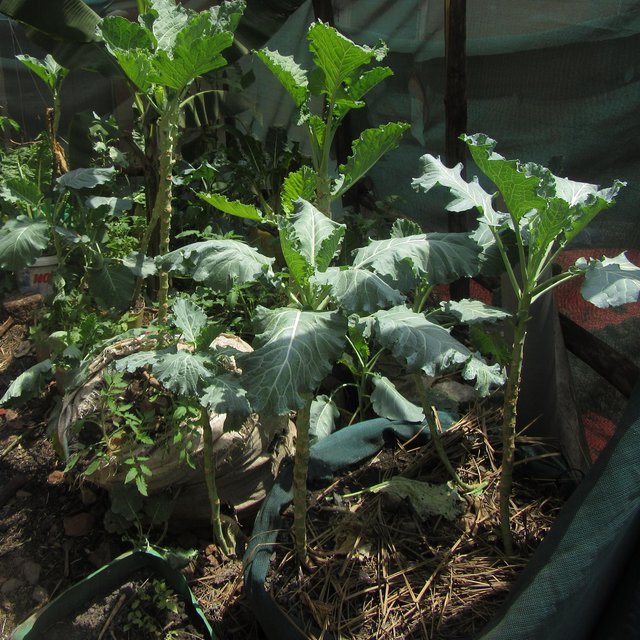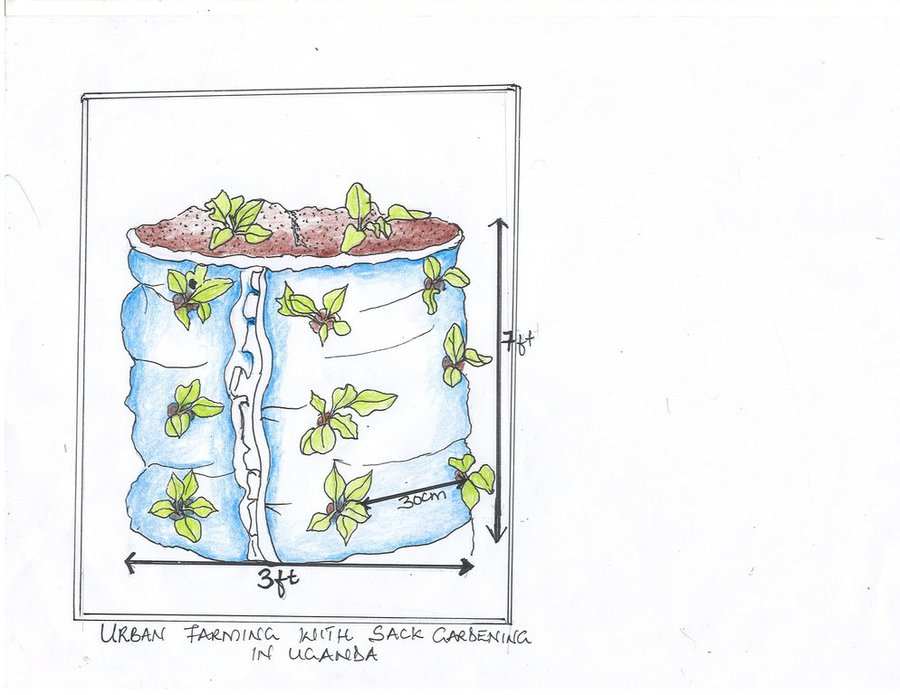



The technology is mostly promoted by farmers in Kampala District, Central Uganda and other parts of the country. The technology is seen as a cheap and healthy solution to food insecurity and runaway unemployment in Kampala’s slum. It is preferred by farmers because it's cheap, high-yielding and promoting food security while maximizing land and water use.
This technology is practiced in the slum area of Kisenyi 2 zone, Kamokya parish, Kampala District and was established in 2015, where the farmer got farming training from Kampala City Council Authority through demonstrations in the urban farming program. The main reasons for its establishment were; the ease to establishment and management, space optimization, no special skills required and affordability.
To establish such a technology the farmer started by collecting huge sacks of banana leaves that had been dumped around the neighborhood.
Black soil was mixed with chicken manure that was available. Small pebble stones were added and strong sticks placed in the middle of the sack, right from bottom to top. The sack was then filled with soil, leaving the stones erect in the middle. For an optimal production, the farmer used bags with a containing capacity of 50 to 100 kilograms. Additonal items were one polyethylene (food-safe bag. ie: rice bag) and a pipe of the height of the bag, opened at both ends, 15 to 20cm long.
The complete system consists of 50 kilos of soil, 25 kilos of fertilizer (compost, manure) which is adjusted according to the
quality of the soil plus 15 kilos of stones (3 to 7 cm diameter).
In some sacks the farmer grows tomatoes, cabbages and carrots. Usually the crops with big roots, like carrots, go on the top, and the sides are reserved for cabbages with small roots, she says. The sack garden is watered on a daily basis, twice a day if the weather is dry and once a day if the weather is humid. There is no such a thing as a crop-growing season. The garden is ever green, even during the dry season. The farmer makes 0.6$ selling spinach to neighbors, and 0.84$ selling produce to the market. This translates to about 27.8$ per month, after deducting expenses.
Sack gardening is very advantageous to the farmer and other farmers are trained in the technology by the farmer who started it. The farmer receives an equivalent of 1.39$ a day. For 20 training days this totals to 27.8$ a month from tutoring a women group in Kamokya. This additonal income helps the farmer securing enough money to meet needs like school fees, food and utility payments. It also provides a secure source of nutritional food, facilitates growing of vegetables in areas without suitable soils or adequate space, promotes efficient and effective utilization of available water and nutrients.

Lugar: Central Region, Uganda
No. de sitios de Tecnología analizados: un solo sitio
Difusión de la Tecnología: aplicada en puntos específicos/ concentrada en un área pequeña
Fecha de la implementación: 2016
Tipo de introducción




Especificaciones técnicas
Autor: Prossy Kaheru
The sack is vertical with 10-15 cm.
Vegetables planted include Carrots, Tomatoes and Sukuma wikki |
|||||||||||
| Especifique insumo | Unidad | Cantidad | Costos por unidad (dólares americanos) | Costos totales por insumo (dólares americanos) | % de los costos cubiertos por los usuarios de las tierras |
| Mano de obra | |||||
| Sack fiiling | Man day | 5,0 | 1,39 | 6,95 | 100,0 |
| Nursery bed preparation | Man day | 2,0 | 1,39 | 2,78 | 100,0 |
| Transplanting | Man day | 5,0 | 1,39 | 6,95 | 100,0 |
| spraying | Man day | 1,0 | 1,39 | 1,39 | 100,0 |
| Equipo | |||||
| Hoes | Pieces | 2,0 | 2,78 | 5,56 | 100,0 |
| Wheelbarrow | Piece | 1,0 | 27,78 | 27,78 | 100,0 |
| Sprayer pump | Piece | 1,0 | 13,89 | 13,89 | 100,0 |
| Sacks | Pack | 10,0 | 4,167 | 41,67 | 100,0 |
| Material para plantas | |||||
| Tomato seeds | kg | 1,0 | 1,95 | 1,95 | 100,0 |
| Cabbage seeds | kg | 1,0 | 1,95 | 1,95 | 100,0 |
| Carrots seeds | kg | 1,0 | 2,3 | 2,3 | 100,0 |
| Sukuma wiki seeds | kg | 1,0 | 1,95 | 1,95 | 100,0 |
| Fertilizantes y biocidas | |||||
| Compost manure | Bags | 12,0 | 1,95 | 23,4 | 100,0 |
| Dythene pestcides | kg | 1,0 | 6,95 | 6,95 | 100,0 |
| Dudu cyper pestcides | litre | 1,0 | 2,78 | 2,78 | 100,0 |
| Material de construcción | |||||
| Stones | Trip | 0,5 | 8,34 | 4,17 | 100,0 |
| Costos totales para establecer la Tecnología | 152.42 | ||||
| Especifique insumo | Unidad | Cantidad | Costos por unidad (dólares americanos) | Costos totales por insumo (dólares americanos) | % de los costos cubiertos por los usuarios de las tierras |
| Mano de obra | |||||
| Harvesting | Man day | 0,5 | 2,7 | 1,35 | 100,0 |
| Weeding | Man day | 0,5 | 2,7 | 1,35 | 100,0 |
| Fertilizantes y biocidas | |||||
| Dithane pestcides | kg | 1,0 | 7,0 | 7,0 | 100,0 |
| Dudu cyper pestcides | litre | 1,0 | 2,7 | 2,7 | 100,0 |
| Indique los costos totales para mantenecer la Tecnología | 12.4 | ||||
Cantidad antes de MST: Had 2 sacks
Cantidad luego de MST: She has 10 sacks
The farmer acquired skills in sustainable sack garnening
Cantidad antes de MST: Vegetable quality were vere low
Cantidad luego de MST: Improved quality
She maintains the garden on a daily basis
Cantidad antes de MST: She didnot spray the plants
Cantidad luego de MST: Sprays the plants as directed
The farmer has enough skills in sack gardening
She use compost manure
Cantidad antes de MST: She used to 0.6$ day
Cantidad luego de MST: She gets 0.84$ a day
Reduced maintenance costs and high yields
Cantidad antes de MST: Vegetables were bought from the market
Cantidad luego de MST: Vegetables are harvested and sold to the market
This sack based technology reduces the need to establish vegetable gardening on open ground thus reduces the risk of soil losses